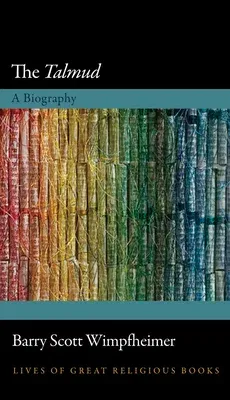The life and times of an enduring work of Jewish spirituality
The Babylonian Talmud, a postbiblical Jewish text that is part
scripture and part commentary, is an unlikely bestseller. Written in a
hybrid of Hebrew and Aramaic, it is often ambiguous to the point of
incomprehension, and its subject matter reflects a narrow scholasticism
that should hardly have broad appeal. Yet the Talmud has remained in
print for centuries and is more popular today than ever. Barry Scott
Wimpfheimer tells the remarkable story of this ancient Jewish book and
explains why it has endured for almost two millennia.
Providing a concise biography of this quintessential work of rabbinic
Judaism, Wimpfheimer takes readers from the Talmud's prehistory in
biblical and second-temple Judaism to its present-day use as a source of
religious ideology, a model of different modes of rationality, and a
totem of cultural identity. He describes the book's origins and
structure, its centrality to Jewish law, its mixed reception history,
and its golden renaissance in modernity. He explains why reading the
Talmud can feel like being swept up in a river or lost in a maze, and
why the Talmud has come to be venerated--but also excoriated and
maligned--in the centuries since it first appeared.
An incomparable introduction to a work of literature that has lived a
full and varied life, this accessible book shows why the Talmud is at
once a received source of traditional teachings, a touchstone of
cultural authority, and a powerful symbol of Jewishness for both
supporters and critics.

